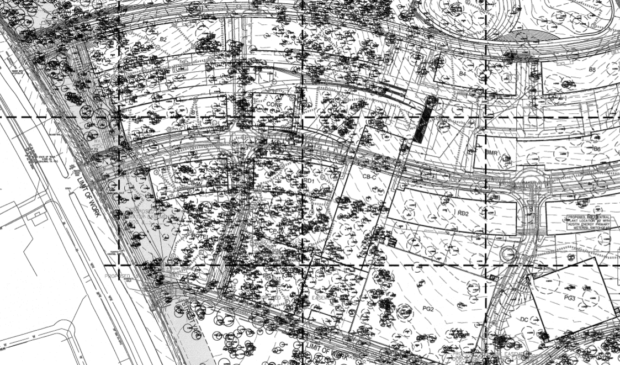At Robinson Ranch, the apple may fall far from the tree
Monday, October 14, 2019 by
Jessi Devenyns When Apple Inc. announced its plans to build a $1 billion campus late last year, there was a wave of speculation about what the company’s expansion would mean for Austin in terms of traffic congestion and employment opportunities.
However, there was little talk of the company’s development plans. Site plans filed last December indicate the removal of about 1,500 trees, 187 of which are considered to have protected or heritage status under the city’s Heritage Tree Ordinance, according to Peggy Maceo of the Environmental Commission.
The tech giant selected 6900 Parmer Lane at Robinson Ranch for its campus – a site that is barely inside the Williamson County line but still within the Austin city limits. Its choice of land was strategic; just after the announcement, the Williamson County Commissioners Court approved a roughly $16 million tax abatement package for the new campus.
Furthermore, Apple will benefit from the density entitlements on the 6,300-acre family ranch, which was annexed and rezoned in 2004 as a planned unit development for high urban density, including mixed-use and transit-oriented development. Though in some respects this demonstrates forward thinking by early urbanists, it also means that the regulations the site is subjected to are at least 15 years out of date.
Apple is entitled to develop using the regulations that were in place when this agreement was struck, but just barely.
According to the original ordinance approving the PUD, the development regulations are only valid for 15 years, at which point they “will no longer apply and development within Robinson Ranch will be subject to all of the city’s then-current laws.” The effective date of the ordinance was June 17, 2004, making the cutoff deadline June 17 of this year.
Apple is squeaking in under the wire and filed site development permit plans and tree removal permit requests for its 126-acre campus on Dec. 19, 2018.
City Arborist Keith Mars told the Austin Monitor that the PUD agreement stands and the city cannot require Apple to adhere to current tree protection ordinances.
The property is subject to Austin’s former Protected Tree Ordinance, which offers protection only to trees with trunk diameters 19 inches and above. Today’s Heritage Tree Ordinance, by comparison, protects all trees with trunks that are at least 8 inches in diameter. Trees with trunks 19 inches or greater require a permit for removal and trees larger than 24 inches require a variance for removal.
Nevertheless, Mars did tell the Monitor that on such a large campus there will be trees remaining. Of the 187 protected trees scheduled for uprooting, Mars told the Monitor that 30 of them will be preserved.
Quite a few of the trees slated for removal are marked as dead. “There is a large, active, oak wilt center on the property and there are regulated trees that have succumbed to oak wilt,” Mars said. How many is unknown.
A press release from Apple last December says “the new campus will include 50 acres of preserved open space.” Site plans show that only 83.3 acres of the 126 total will be developed.
Apple declined to comment on how tree protection factored into the design of the campus.
Still, the need for the office space is clear. Once Apple builds its second campus in Austin, it will outpace HEB and Dell as the city’s largest employer and will need somewhere to put all its workers and protect them from the Texas sun.
Schematics courtesy of the city of Austin.
The Austin Monitor’s work is made possible by donations from the community. Though our reporting covers donors from time to time, we are careful to keep business and editorial efforts separate while maintaining transparency. A complete list of donors is available here, and our code of ethics is explained here.
You're a community leader
And we’re honored you look to us for serious, in-depth news. You know a strong community needs local and dedicated watchdog reporting. We’re here for you and that won’t change. Now will you take the powerful next step and support our nonprofit news organization?









